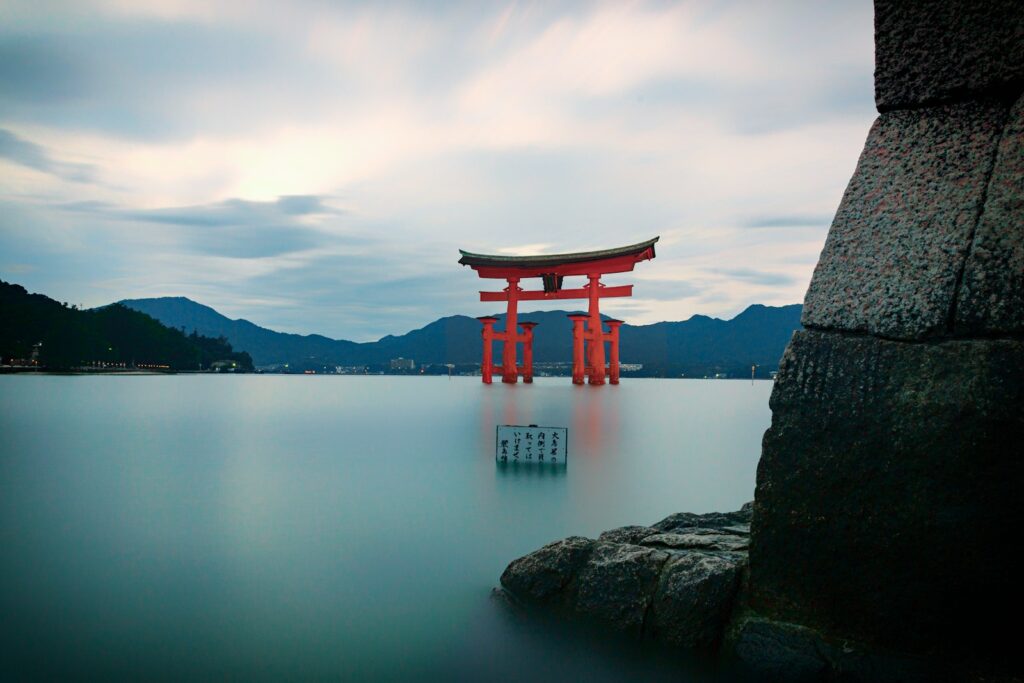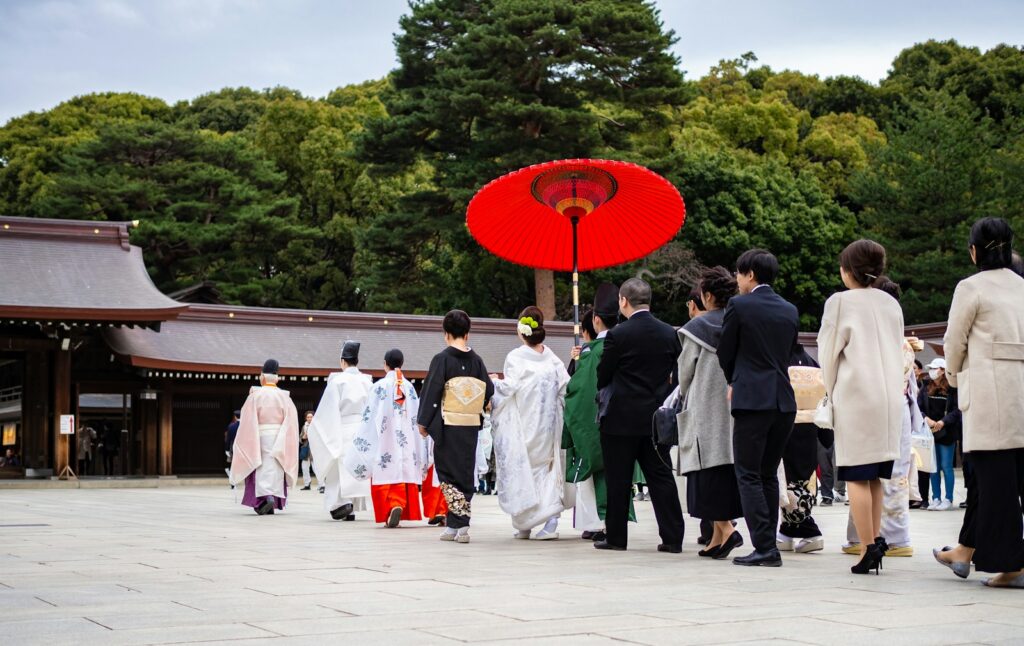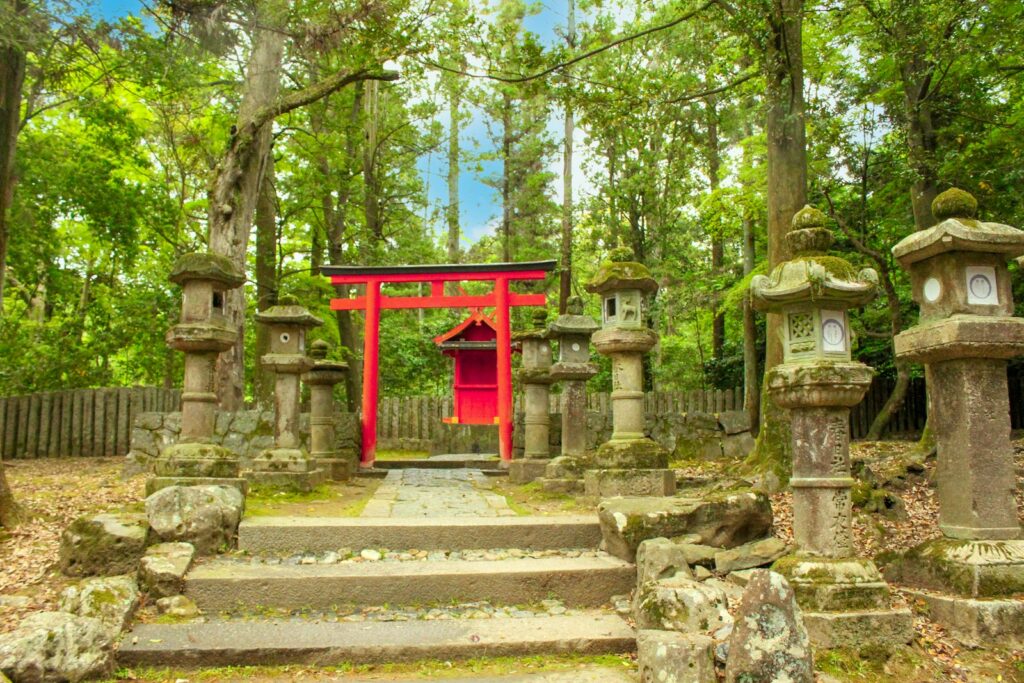Japan’s take on religion is special, blending harmony and coexistence. People often follow different faiths without conflict. Shinto and Buddhism are the two main religions deeply woven into Japanese culture.
Shinto celebrates the bond between humans and nature. Buddhism guides people toward enlightenment and peace. Together, they create a spiritual landscape that has grown with Japan for centuries.
If you’re curious about how these traditions work together, you’re in for a fascinating journey. We’ll explore Japan’s unique spiritual practices.
Overview of Religion in Japan
Religion in Japan is a colorful mix of beliefs and practices. Many Japanese people don’t identify with any religion but still participate in rituals inspired by Shinto and Buddhism. These religions shape Japanese culture and values.
Shinto: Japan’s Indigenous Belief System
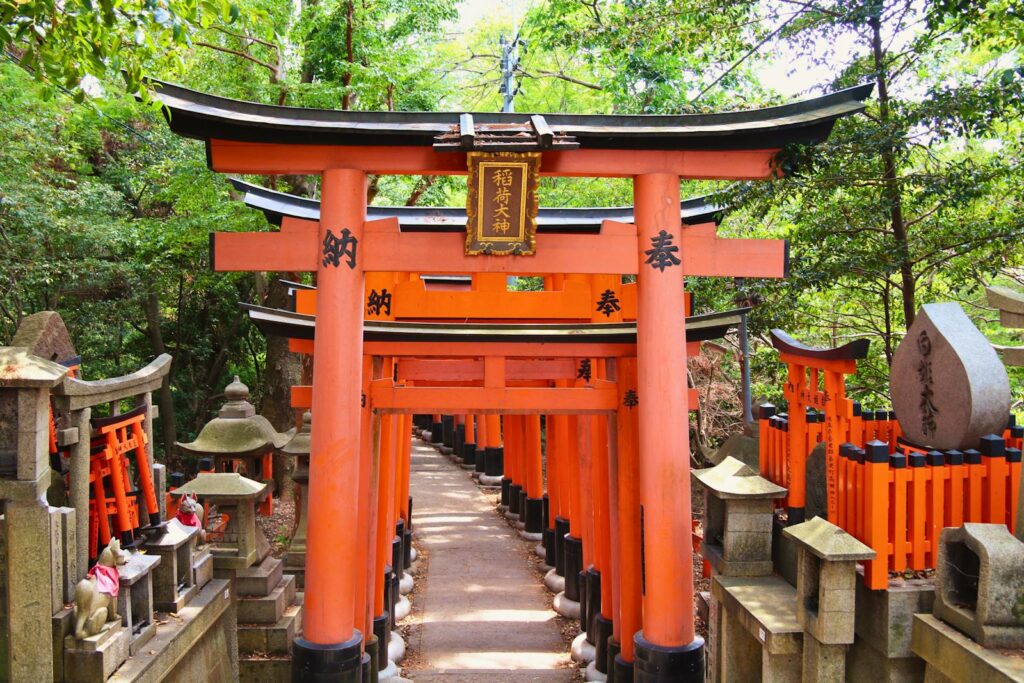
Shinto is Japan’s native religion. It focuses on kami, spirits of nature, ancestors, and abstract ideas. It’s simple, with a deep respect for nature. Every natural phenomenon holds spiritual significance.
Shinto promotes harmony with nature and community through rituals. These ceremonies honor kami and mark important life events. Shrines, like Ise Jingu, are cultural and spiritual centers.
Interested in these traditions? Check out Japanese Religions | FSI for more.
Buddhism’s Introduction and Influence
Buddhism arrived in Japan in the 6th century, brought from Korea and China. It introduced structured teachings, focusing on enlightenment and peace. Over time, Buddhism merged with local customs, creating a unique spirituality.
Japanese Buddhism evolved into schools like Zen and Pure Land. Monasteries became cultural and academic hubs. Festivals like Obon honor ancestors in heartfelt ceremonies. Learn more about Buddhism’s impact on Japan at Religion in Japan.
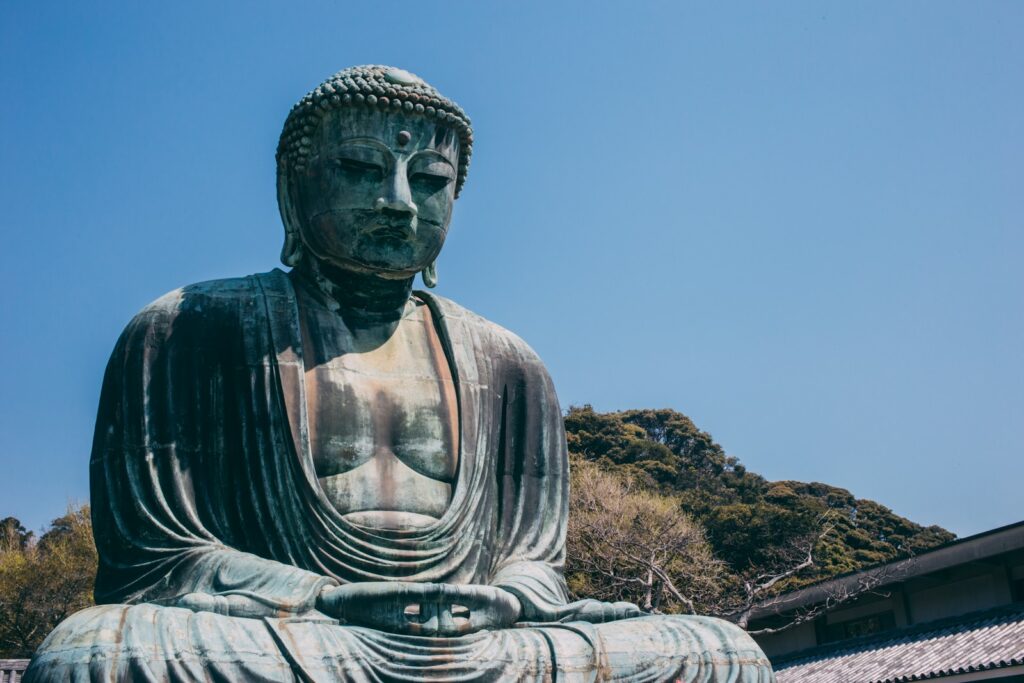
The Syncretism of Shinto and Buddhism
Japan shows a rare harmony between Shinto and Buddhism. This blending is called Shinbutsu-shūgō, where kami and Buddhas are seen as one. This led to Buddhist temples within Shinto shrines, symbolizing coexistence.
Rituals for births are Shinto, while funerals are Buddhist. The two are seen as complementary, not separate. Curious about this fusion? Learn more at Japanese Religion | Britannica.
Japan’s religious fabric combines Buddhism’s calm with Shinto’s reverence for nature. This reflects not just spirituality but also Japan’s history and culture. Does this approach surprise you? Let us know what resonates most!
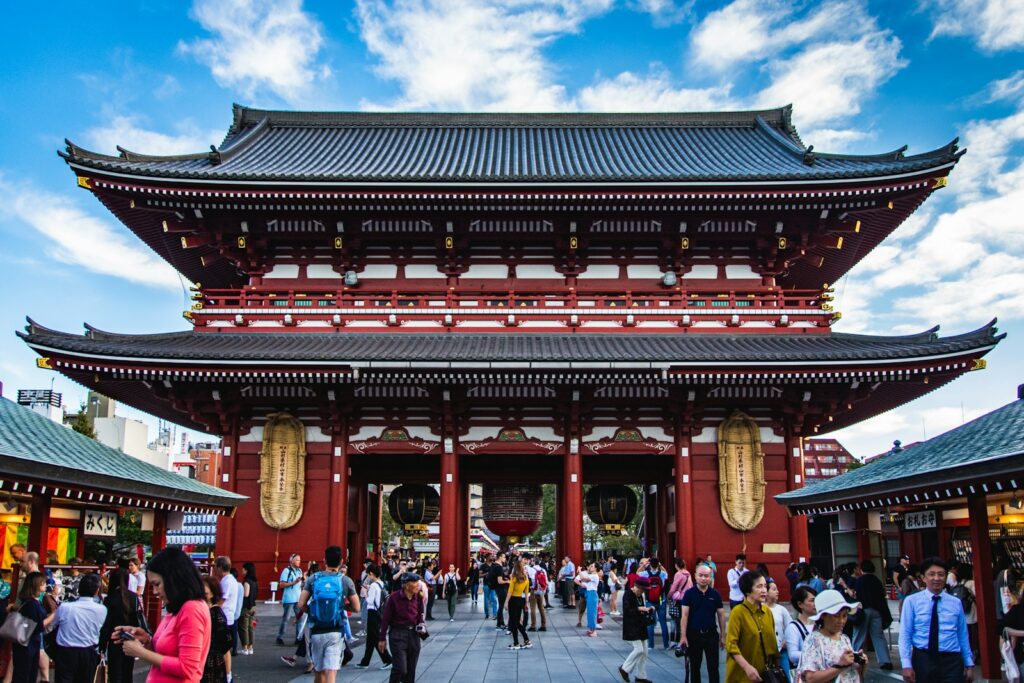
Modern Religious Practices
Religion still plays a role in modern Japan, mixing tradition with modern elements. Many Japanese are non-religious but still participate in spiritual customs. Let’s see how these practices shape everyday life in Japan today.
Traditional Festivals and Rituals
Japan’s festivals and rituals show its deep spiritual roots. The New Year’s shrine visits, or “Hatsumode,” are very important. Millions visit famous shrines like Meiji Jingu in Tokyo to pray for a good year.
At these shrines, people toss coins, clap, and bow, showing respect and hope for the future.
Obon is another big summer festival. It’s a time to honor ancestors. Families visit graves, clean them, and offer food and incense. It’s a time to remember family ties and honor those who have passed away.
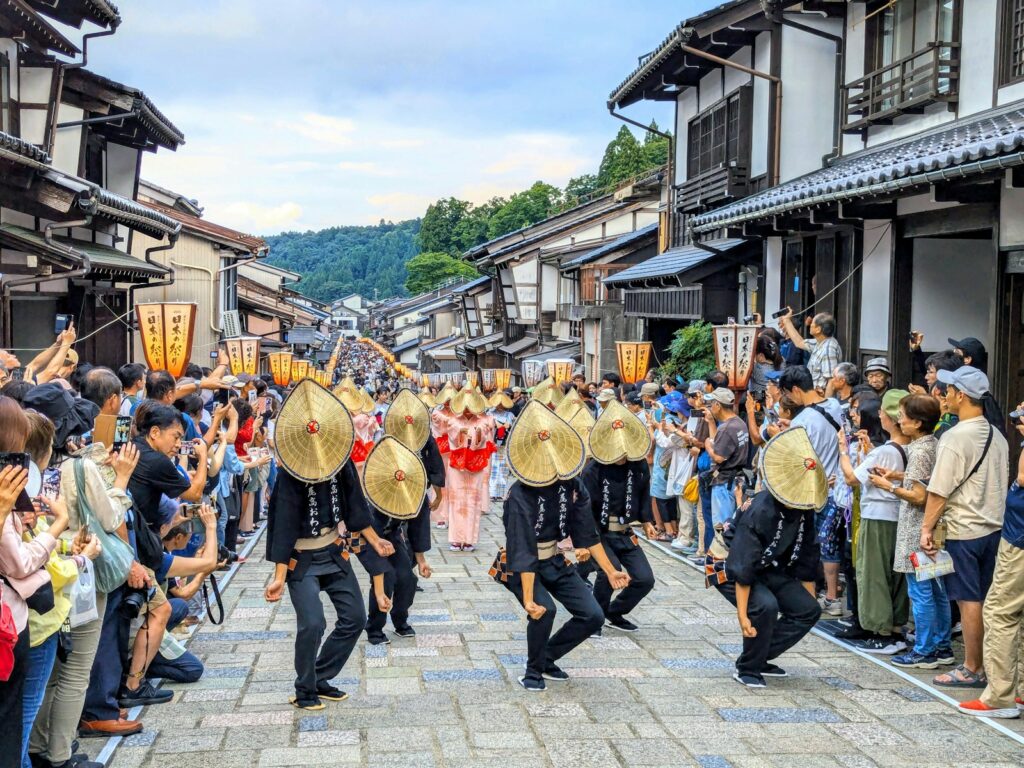
For more on modern Japanese festivals, check out Exciting Japan Matsuri 2025 – Don’t Miss It!.
Role of Religion in Everyday Life
Religion in Japan is more than just festivals. It shapes daily life and important events. Many homes have altars for Shinto or Buddhist practices. Here, families make offerings like rice or flowers.
Weddings often include Shinto ceremonies featuring traditional clothes and rituals to honor the kami. Funerals, on the other hand, are mostly Buddhist. They reflect beliefs about the afterlife and the soul’s journey.
Even simple tasks like cleaning or planting have spiritual meanings. They follow ancient customs that aim for harmony with nature. These practices show how religion is woven into daily life in Japan.
Interested in more cultural aspects? Explore Japanese Culture and Religion for deeper insights.
New Religious Movements in Japan
Japan has seen the rise of new religions, known as “Shinshukyo,” in the 19th and 20th centuries. Groups like Soka Gakkai offer modern takes on Buddhism. They focus on community and help with personal struggles in a fast-paced world.
These new religions also promote peace and dialogue. They help start conversations on living together and spiritual well-being. For more on Japan’s evolving religious landscape, visit Religion in Modern Japan.
Religion in Japan beautifully balances tradition and change. It shows its importance in a society that’s always evolving. Each adds its thread to Japan’s cultural tapestry, from ancient rituals to new spiritual movements.
Understanding Shinto and Buddhist Places of Worship
Visiting spiritual sites in Japan is a deep dive into its culture and values. Shinto shrines blend with nature, while Buddhist temples inspire thought. These places invite both respect and discovery.
Let’s look at what makes Shinto and Buddhist places of worship special.
Features of Shinto Shrines
Shinto shrines, or jinja, connect humans with the spiritual world of kami. They aim for harmony with nature and offer a peaceful space for visitors.
Some key features of Shinto shrines include:
- Torii Gates: These large, elegant gates mark the entrance to the sacred area. They symbolize the transition from the everyday world to a divine realm.
- Chōzuya or Temizuya: Visitors purify their hands and mouths at a fountain before entering the main area. This shows the importance of purity in Shinto.
- Offerings and Prayers: People toss coins, bow, clap twice, and pray silently. Clapping is believed to attract the kami’s attention.
Every part of a shrine reflects a deep bond with nature and simplicity, mirroring Shinto’s philosophy. For a full guide on visiting and understanding shrines, see How to Pray at a Shinto Shrine in Japan.
Features of Buddhist Temples
Buddhist temples in Japan reflect the calm of their teachings. They attract visitors with their detailed designs and peaceful vibe. These temples are places of worship and reflection.
Here’s what makes Buddhist temples standout:
- Pagodas: These multi-tiered structures symbolize the elements of earth, water, fire, air, and space. Pagodas often house sacred relics and are iconic elements of Buddhist temple architecture.
- Main Halls and Altars: The main hall, or hondō, features altars adorned with statues of Buddha or Bodhisattvas. These areas are central to rituals and prayers, inviting visitors to connect with Buddhist teachings.
- Meditation Areas: Temples often include spaces for Zen meditation. These areas provide quiet retreats where visitors can reflect and practice mindfulness, embodying the principle of inner peace.
Japanese Buddhist temples blend peaceful gardens with spiritual spaces. This creates an environment that is both beautiful to see and peaceful to think in. Learn more about Buddhist temple features in this comprehensive guide.
Visiting a Shinto shrine or Buddhist temple gives a unique look into Japan’s rich religious traditions. For more on their architectural beauty, check out these insights on Shinto Shrines and Temples.
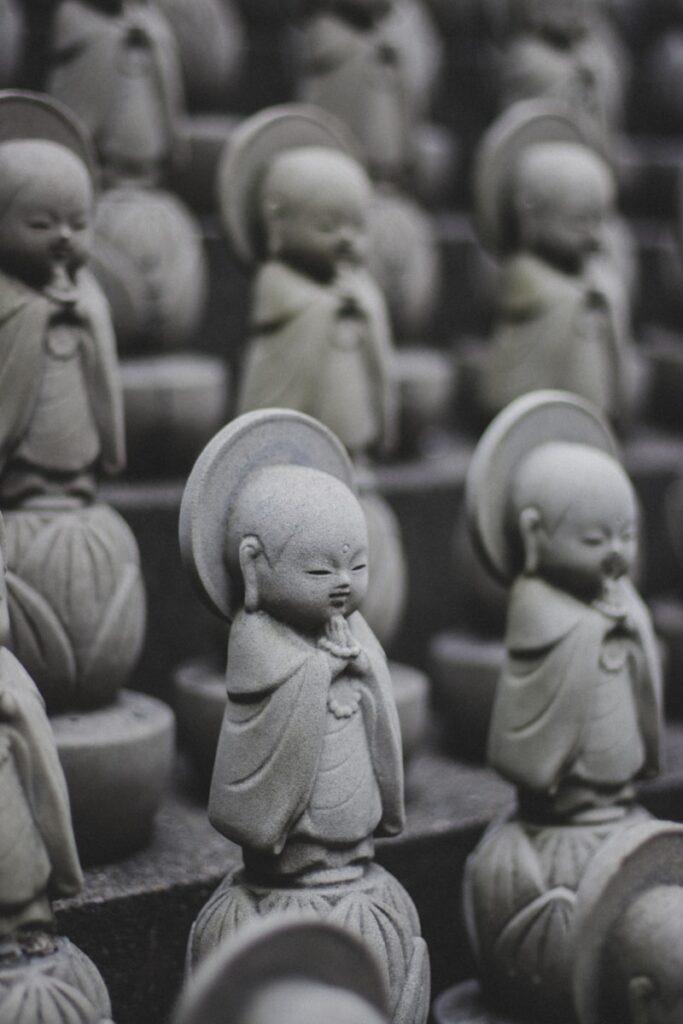
Minority Religions in Japan
Japan’s spiritual scene is a mix of many influences, including minority religions. These have shaped Japan’s culture in subtle but powerful ways. Let’s explore Japan’s spiritual practices beyond the usual.
Christianity in Japan
Christianity came to Japan in 1549, thanks to missionaries like St. Francis Xavier and the Jesuits. It was initially welcomed, growing to over 300,000 converts by the late 16th century. However, the Tokugawa shogunate saw foreign influence as a threat, so they banned Christianity in 1614.
After the Meiji Restoration in 1868, Japan allowed Christianity again. Freedom of religion opened doors for Christians, but they remained a small group. Today, about 1.2% of the population is Christian, mainly in Nagasaki. You can learn more about this journey in A Timeline of Christianity in Japan.
Christianity has also made a difference through humanitarian work and education. Catholic and Protestant groups run schools and charities. Despite being a minority, Japanese Christians promote community and spiritual strength.
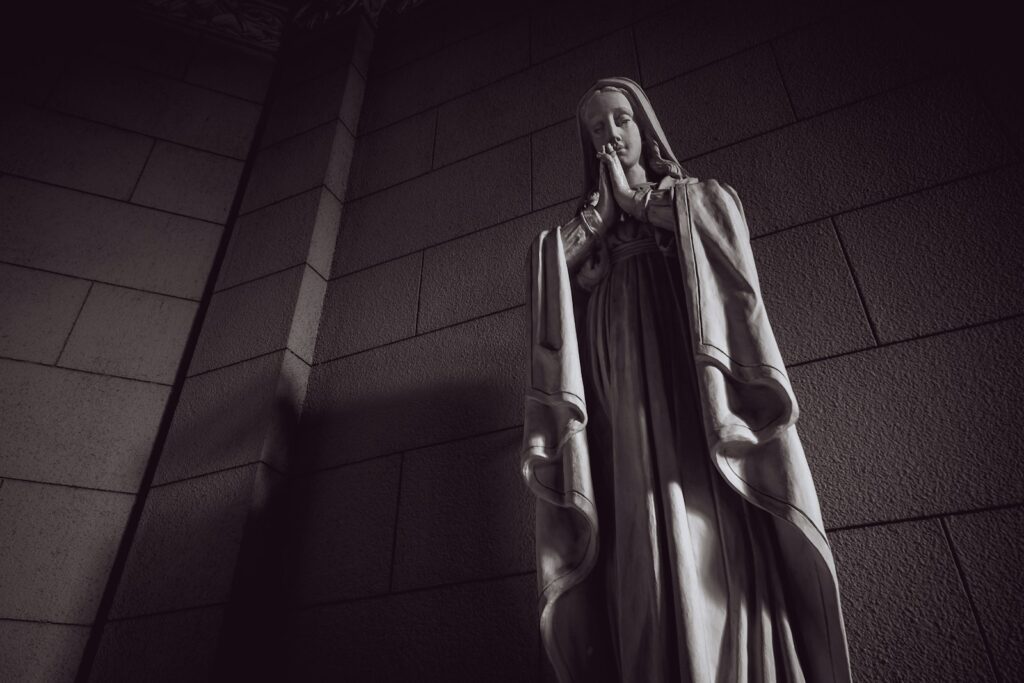
Other Religious Influences
Japan’s culture is a mix of spiritual views, with Confucianism, Taoism, and Hinduism also present. These philosophies have found their own places in Japan’s cultural tapestry.
- Confucianism: Introduced to Japan through China, Confucian values deeply influenced the social structure, ethics, and education in ancient Japan. These teachings emphasize filial piety, discipline, and balance—values that still resonate in Japanese society today. If you want to learn more about this, check out Japanese Confucian Philosophy.
- Taoism: Though its presence is less prominent, Taoism has inspired aspects of Japanese spirituality. Traces of Taoist thought can be found in Japanese literature, arts, and even the concept of yin-yang, reflecting harmony with nature. Learn more about its subtle impact in Taoism in Japan.
- Hinduism: Predominantly practiced by expatriate communities from India, Nepal, and Sri Lanka, Hinduism has influenced Japan’s customs in surprising ways. The worship of deities like Saraswati (Benzaiten in Japan) highlights the cross-cultural exchange between Hinduism and local spirituality. Explore this fascinating connection at Hinduism in Japan.
These minority religions may not have large followings, but their philosophies have quietly enriched Japanese traditions, offering unique perspectives on life, ethics, and spirituality.
By acknowledging these minority religions, we gain a fuller understanding of what makes Japan’s spiritual landscape so dynamic and layered.
Cultural Significance of Religion in Japan
Religion in Japan is a silent yet intricate thread woven deeply into daily life, art, festivals, and values. While many Japanese may identify as non-religious, their connection to spiritual practices remains profound. Shinto and Buddhism influence individual spirituality and stand as vital pillars of Japan’s cultural and artistic expression.
Religion in Japanese Arts and Literature
Art, poetry, and even everyday cultural practices in Japan are painted vibrantly with the touch of spirituality. Shinto’s reverence for nature and Buddhism’s focus on inner peace have profoundly shaped Japanese aesthetics.
- Ikebana (Flower Arrangement): Originally inspired by Buddhist offerings, ikebana reflects the beauty of simplicity and the impermanence of life. Each arrangement tells a story, combining natural elements like leaves and flowers to symbolize harmony.
- Tea Ceremony (Chanoyu): Rooted in Zen Buddhism, the tea ceremony emphasizes mindfulness and the fleeting beauty of each moment. Every aspect reflects a spiritual journey From how tea is prepared to the feelings shared during its consumption.
- Haiku Poetry: The influence of Shinto and Buddhism is evident in haiku’s focus on nature and momentary experiences. Through just 17 syllables, these poems encapsulate the interplay of human existence with the natural world.
The spiritual undertones in these traditional arts reveal a perspective that celebrates life’s subtle, transient beauty. To explore more about Japan’s religious influence on arts, check out Japanese Religions | FSI.
Festivals as Cultural Touchstones
Festivals in Japan are more than just celebrations; they are living tapestries of religious and cultural practices. These events, known as matsuri, keep Shinto and Buddhist traditions vibrant and connected to modern life.
- Shinto Matsuri: Shinto festivals like Gion Matsuri in Kyoto or Tenjin Matsuri in Osaka are famous across the nation. Parades, floats, and rituals are conducted to honor kami, the sacred spirits, ensuring blessings, prosperity, and harmony for the community.
- Obon (Ancestor Festival): Rooted in Buddhist beliefs, Obon involves families welcoming back the spirits of their ancestors. Activities such as cleaning gravesites and lighting lanterns hold both personal and cultural significance.
These festivals honor spiritual traditions and strengthen community bonds. They serve as cultural landmarks, sharing Japan’s history and values with future generations. For more, visit Religion in Japan.
Religion in Japan connects culture across time. It’s seen in flower arrangements and summer festival floats. Spirituality is the heart of Japanese art and tradition.
Conclusion
Japan’s religion creates cultural harmony. It combines Shinto’s love for nature with Buddhism’s deep thinking. These traditions shape spiritual practices, festivals, and daily life, offering a unique cultural experience.
Visiting Japan’s temples, shrines, and festivals lets you see its spiritual landscape. You can join events like National Foundation Day. Or learn more about Japanese Society and Traditions.
Japan invites you to dive into its spiritual and cultural beauty. This experience speaks volumes without needing words.

